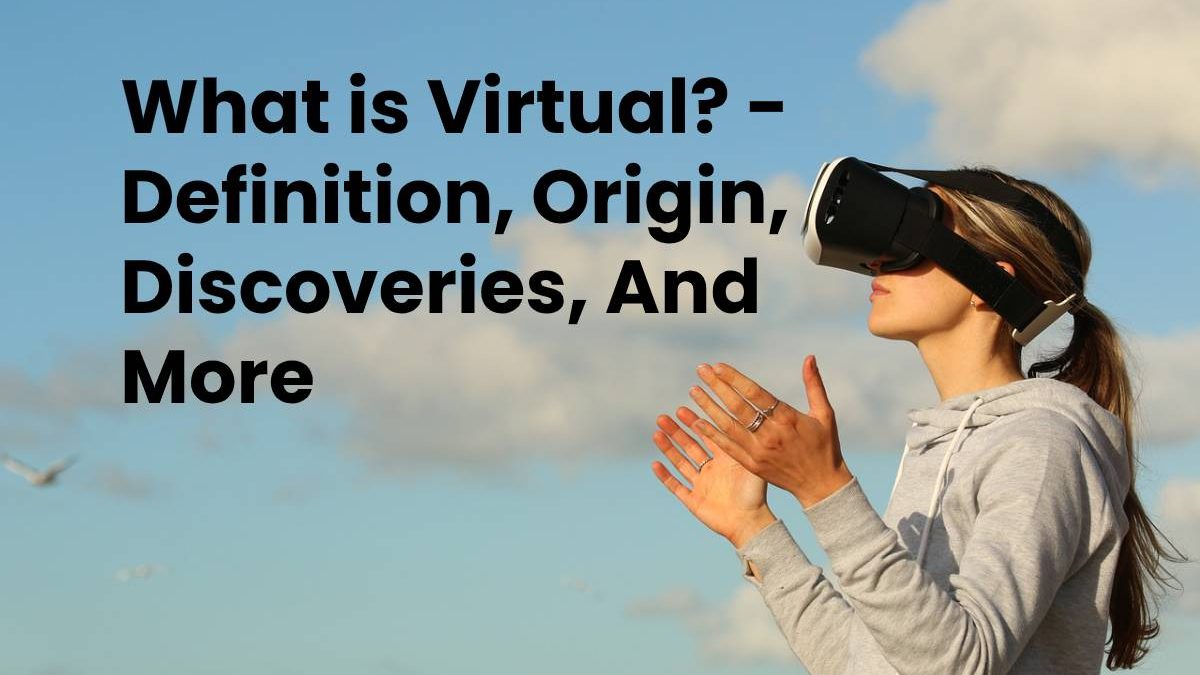Table of Contents
Definition Virtual
Virtual reality is a computer-generated observation that can be the same to or completely different from the real world. Applications of virtual reality can include entertainment and educational purposes. Other distinct types of VR style technology also include augmented reality and mixed reality.
From the Latin virtus (“force” or “virtue”), virtual is an adjective that refers to what has the virtue of producing an effect, although it does not provide it at present.
The concept currently associates with what has an apparent existence. As opposed to the real or physical. This term is prevalent in the field of computer science and technology to refer to the reality built through digital systems or formats.
Also read: What is a Programmer? – Definition, Functions, and More
Origin
Virtual reality does not have a well-defined origin, probably because it was the convergence of various ideas and discoveries that took place since the mid-19th century, long before the existence of the computers we know and use today.
Important discoveries
Below are certain milestones over the past two centuries, which indeed represent vital points on the road to this fascinating technology:
- 1838: Charles Wheatstone, an inventor from Great Britain, created the first stereoscope, a device capable of reproducing static images in three dimensions. It was a system that looks similar to a pair of glasses, in which two photographs of the same scene places, each taken from a different angle, to simulate human eye vision.
- 1929: for the first time in history, it was possible to train future pilots of the US armed forces virtually, thanks to the creation of a flight simulator. It was called Link Trainer (although it was also known by the name Blue Box) and was mechanical.
- 1930: American scientists invented the first mechanical simulators for the study of floods of dams and rivers.
- 1945: using the first computer with electronic technology, known as ENIAC. It was possible to simulate for the first time the trajectory of the projectiles. Subsequently, this was to apply to the Manhattan Project to simulate explosions.
- 1958: the Philco company developed a virtual reality helmet, which translated the movements made by the.
- 1965: a newspaper article entitled “The Ultimate Display” (“The Best Screen”) written by Ivan Sutherland described virtual reality as a concept, but without using the term itself.
- 1967: the company Evans & Sutherland, developer of the first virtual world creation program with three-dimensional models, was founded.
- 1970: a glove was created that allowed displacement through a virtual world.
- 1979: the first computerized flight simulator was released.
- 1984: in the book «Neuromancer, « a novel by William Gibson. The term «cyberspace» was used for the first time, to refer to a virtual world.
A Virtual pet
It is a digital companion whose work is to accompany and entertain people. It has no more physical form than the hardware where it runs, which is usually a small electronic device. The user must feed and care for the virtual pet to avoid “dying.”
A Virtual library
It is one that houses digital works in various formats (.doc, .pdf). Through the Internet, these libraries are available to people around the world.
Also read: What is a Blockchain? – Definition, Functions, Origin, And More

